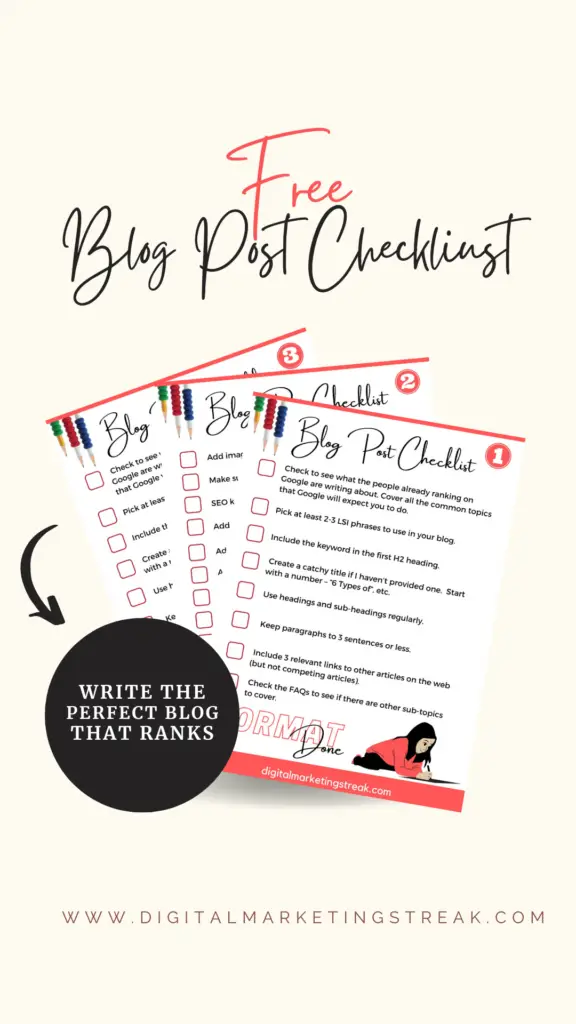In this guide, I will give share with you a detailed example of a micro-niche blog that made $3,395.78 in the last 6 months in passive income from blogs. An average of $565.83 / month. All of this only took a few hours on a weekly basis.
You can build micro-niche blogs that generate passive income on autopilot with just a few months of work. It’s not that simple though, You’ll need to invest a few hours on a weekly basis(consistently). You can start small and scale up gradually.
In this blog, I guarantee to provide you with a step-by-step guide on how you can start a blog and start earning from your blog content by learning from my journey.

I run multiple blogs that are monetized with a display ads network, this enables me to generate passive income for myself. I am on a journey to make a full-time income from my passive income blogs and that’s what I want to teach others too, so you can join me on the other end.

My Blog generated more than 242,214 pageviews in the last quarter (Jan-April 2022) and I followed the exact same format to achieve this traffic on my blog from scratch.
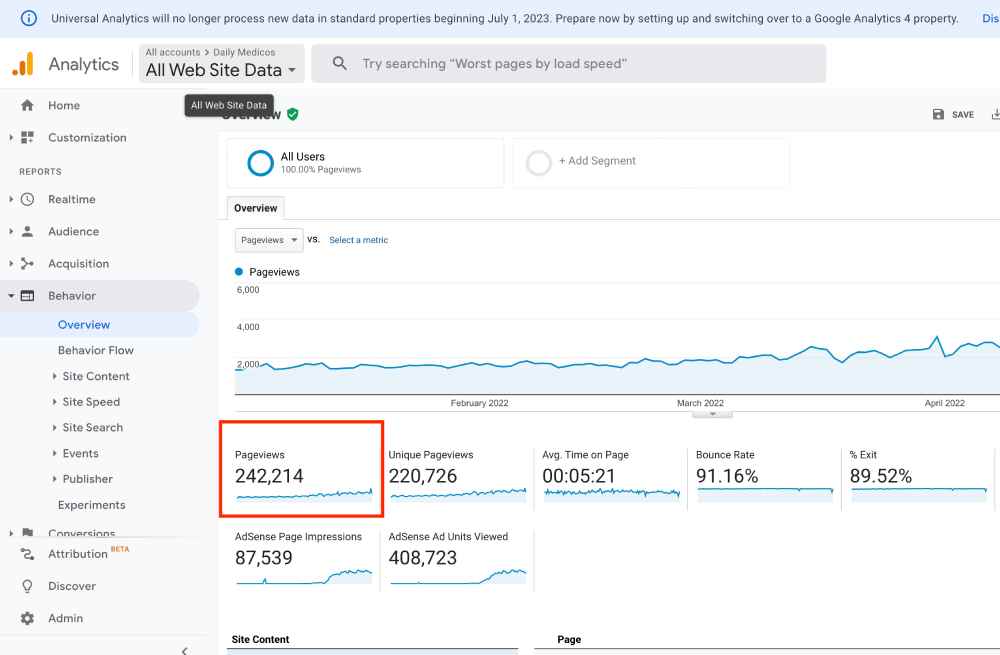
Here is a snippet from my Ezoic earnings dashboard.
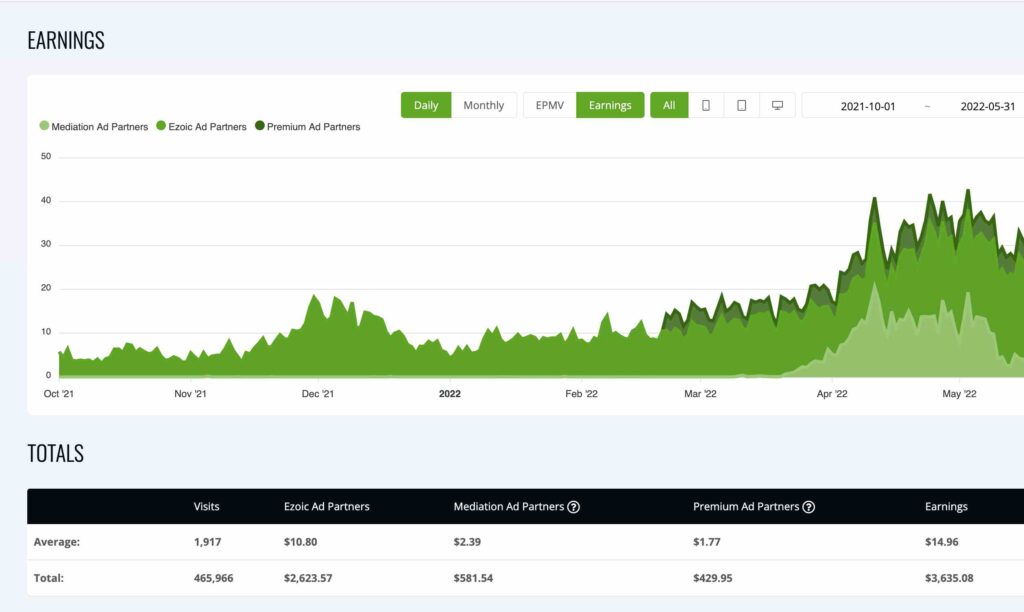
Here is the table of contents. This blog covers tons of useful information. Bookmark this page or save it, don’t get overwhelmed, go through each step, and you will surely succeed.
Table of Contents
- How to Select a Domain Name?
- Step 1: Select a Profitable Niche
- Step 2: Research & Planning
- Keyword Research:
- Content Writing
- Step 3: Execution work
- Post Types
- Set Goals
- Make a heart connection…
Before you move on to my master plan for blog execution, keep your mind clear of the reasons why you want to do it. What is your reason?
Why you should start a blog? For Me, My Reasons are simple!
- Passive Income
- Scalable Growth
- Flippable Assets (Can be sold for a higher Price)
- Flexible Lifestyle
In my opinion, financial freedom along with time and location freedom is important. though this might be considered a luxury by most, I consider this an option that requires proper planning, consistency, and execution.
How small can you start?
If you want to start a blog today you do not need a huge investment or multiple writers. All you need is a domain and hosting and that is all. You can purchase a domain and host for less than $30 for a year.
How to Select a Domain Name?
The domain name will act as the identity of your brand. Think of your blog as a business from day one. The first thing your reader needs to remember is your business name so think of something that is unique and also easy to remember.
Here are a few tips to select a perfect domain name:
- Go with a .com (Easier to access for the audience)
- Avoid using any numbers, hyphens, etc.
- Make it as short and concise as possible
- Avoid Complicated words that are hard to spell.
Once you have the resources ready here comes your plan for the blog.
- Select a niche
- Research and findings
- Execution
And lastly followed by immense patience and waiting for the results and outcomes.
Step 1: Select a Profitable Niche
Niche is a topic on which you will base your entire brand. It is important to make sure you are working on the right niche to start a profitable blog in the first place.
A specific topic can either decide whether you can make it or you can fail it.
What is the #1 most important factor when choosing your blog’s niche?
How much your audience is willing to spend?
Here are the most important terms to keep in mind before you go blindly following your passion. You must consider factors like CPC, CPM, and Traffic Volume.
I see people talking about starting a blog on their topic of interest all the time, completely ignoring the fact that in order to make money online from your blog, it must have enough traffic potential and advertiser count.
if there is not enough audience or not enough ad demand, both ways your efforts on your blog will doom you.
Here are the top niches that you can work on along with average EPMV(Earning Per Thousand Visitors):
| Rank (Best to worst) | NICHE | Predicted Revenue per 1000 Visitors |
| 1 | Business & Finance | $10.02 |
| 2 | Travel | $10.02 |
| 3 | Weddings | $10.02 |
| 4 | Health & Fitness | $6.80 |
| 5 | Home & Architecture | $6.80 |
| 6 | Government & Politics | $6.80 |
| 7 | Pets | $6.12 |
| 8 | Beauty & Fashion | $6.12 |
| 9 | Family & Parenting | $6.12 |
| 10 | Sports | $5.44 |
| 11 | Automotive | $5.44 |
| 12 | Music | $5.44 |
| 13 | Web Design & Development | $4.76 |
| 14 | Food and Drink | $4.76 |
| 15 | Gaming | $4.76 |
After shortlisting the niches that you would like to work on, the next step is to consider what strategic edge you have that can help you grow faster than others.
Ask yourself:
- Do I know much about this topic?
- Do I have personal experience with this chosen topic/product/ service?
- Can I write more and more about this topic or is there a limit to the knowledge I have on it?
Step 2: Research & Planning
Research can be easier if the selected niche is what you are interested to write about.
The Web is completely filled up with tons of information regarding every topic. To take out the quality content and structure it accordingly is a strategic task.
Design the structure of your selected niche on a SILO structure. Websites that follow silo structures perform much better than those that don’t.
Silo structure in SEO is an approach to organizing brand websites in a specific order that enables smooth user experience and facilitates search engine crawl, index, and rank experience.
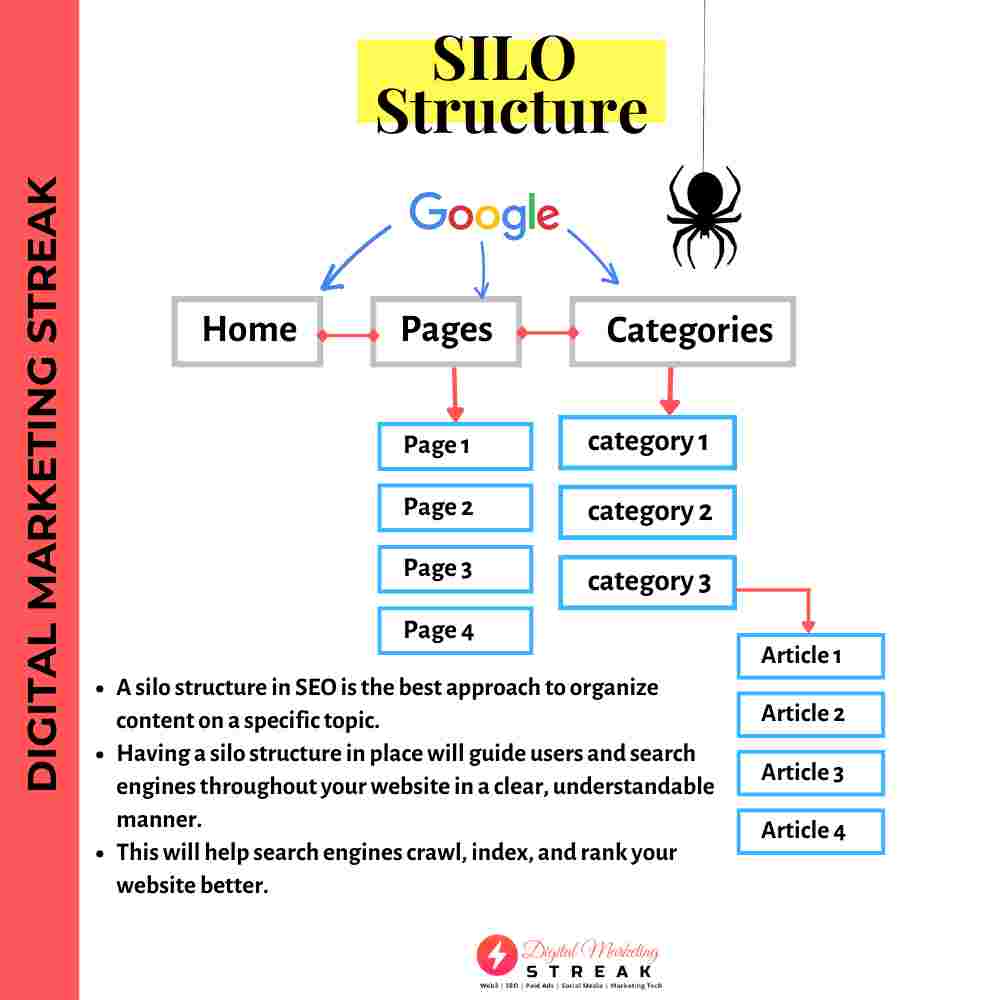
A rough plan based on silo structure may look like the diagram above.
Now, you need to start with keyword research and shortlist at least the first 30-50 topics that you will write on. Keep in mind that these topics must complement each other through internal linking to make the most out of the link structure.
Quick Tip on Content Clusters:
Your blogs will perform better on search engines when one links to another on targetted keywords. This helps web crawlers understand the authority and relevancy of each post or page.
Keyword Research:
You can either use a paid tool like Ahrefs or SEMrush for this or just use google autocomplete to shortlist topics.
I will first show you a hands-on step by step keyword research method using Ahrefs keyword explorer. I shortlist my own keywords the same way.
Keyword research through Ahrefs
Open Ahrefs keyword explorer and write the seed keyword or topic idea that you have.

Select the matching terms option

Set the filters : Keyword Difficulty (KD) = 14, Volume = 500

Here, you have a list of shortlisted keyword ideas that you can pick from based on keyword difficulty. search volume and average CPC.
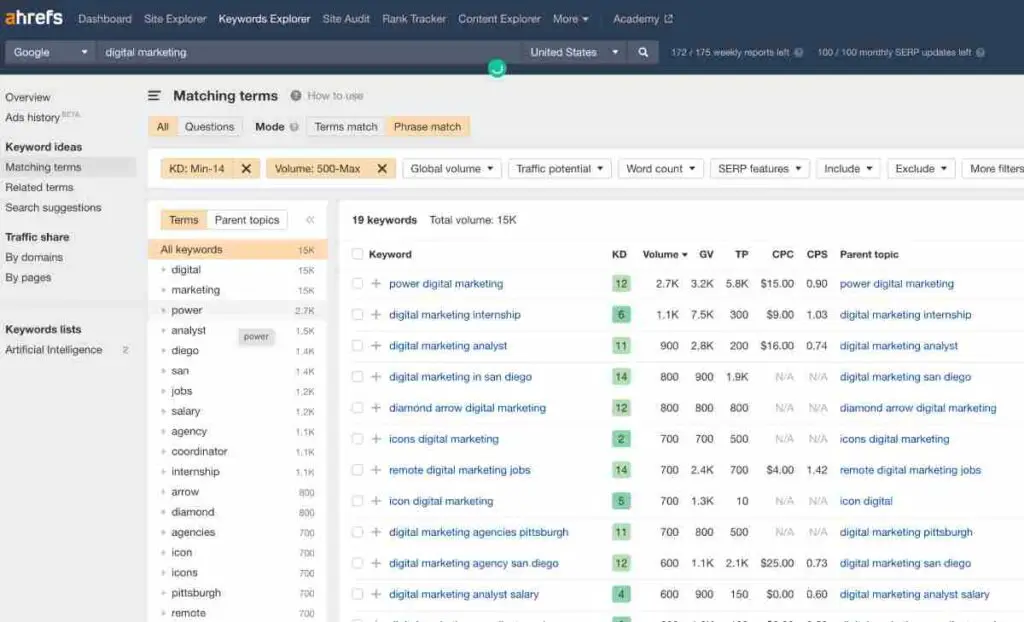
I’m sure this must have given you a basic idea of how you can shortlist keywords from your selected niche yourself.
Keyword research through Google Autocomplete
When you type anything in google search, it starts predicting the next words to complete the phrase. This is called google autocomplete. In a fact, this saves 25% of users’ time in searching.
Here is how to use the Google autocomplete feature for SEO:
- Use the Incognito tab or log out of your Google account
- type in the seed keyword and start looking at predictions.
- Search for each suggested phrase and look into the competition.
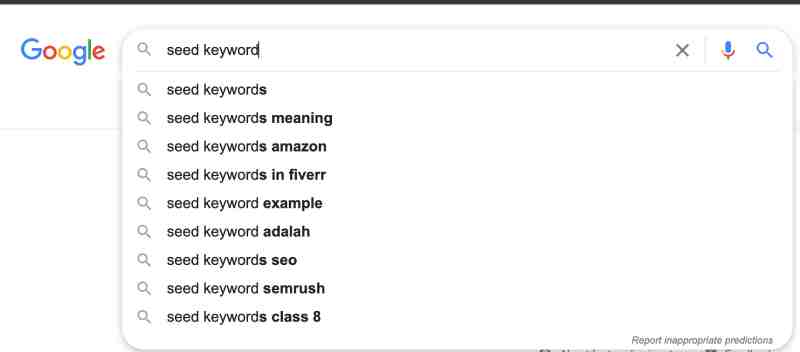
If you find that the top 10 results do not have competitive high DA websites or forums with thin content ranking on the first page, you can target that keyword.
In case you see high DA websites competing for that phrase, move to the next keyword.
You can also type characters from A-Z in alphabetical order after your seed keyword to see the changing suggested terms. This will help you get multiple suggestions based on varying alphabets.

Now, since you have the keywords ready, store them on a Google sheet along with KD, Search Volume, and CPC and prioritize your topic list.
| Priority # on List | Keyword | Keyword Difficulty (KD) | Search Volume | CPC |
| 1 | sample keyword | 12 | 12,000 | $2 |
Next, start content writing.
Content Writing
Content writing for your blog is the most crucial step. Quality content that satisfies the user’s intent will attract organic traffic, higher session duration, and lower bounce rates.
Your blog post should hook users’ attention from start to finish and that is only possible when you provide value to your user.
Planning the headlines, composing an introduction, drafting, and finalizing the blog involves complete thorough research.
The author is responsible for the authenticity of the content and every word delivered to the readers.
Thorough research on the niche requires a few important tips:
- Deep web research on the niche
- Reading popular and ranked articles on the topic
- Reading top-ranked blogs to see how blogging work in the particular niche
- Reading books on the specified niche
These are a few ways that can polish the skills of the author for preparing the research and content for the blog.
Relevancy:
When the content is prepared, it is important to see what is relevant and what can be considered irrelevant or fluff material.
Undoubtedly, not all readers read the entire blog. Most readers skim and read chunks of information. Therefore, it is necessary to add hooks and relevancy everywhere possible.
Headline:
Do you ever wish to continue seeing a poster with a boring tagline/ headline?
You certainly wouldn’t. A catchy headline is what catches the attention of the reader and makes the reader stay on the page and read out the content.
The headline must have a personal touch and a helping factor for the readers. It should sound motivational and helpful and less like marketing or selling headline.
Such headlines not only make the reader interested but make the reader your regular audience as well.
- Use numbers, and make them big
- Use digits instead of words
- Place the number at the start of the headline
Introduction:
Start the introduction of your blog from the topic itself, and get straight to the point from the very first sentence. If you add any irrelevant information in starting 300 words of your blog, your audience will bounce off immediately from your blog to search for another more suitable page that fulfills their intent.
To make the introduction interesting, one can certainly try and experiment few ways such as
- Writing an opening statement with suspense or unsolved question so that reader may follow the reading forward
- Storytelling
- Using a quote to start a blog, that gives an emotional touch
- Stating some surprising stats or data which might be interesting for the reader.
The introduction is one of the weapons that can be used to generate interest in a reader and using it at the end of the blog might be the biggest mistake as the purpose of the introduction is to create a hook.
Drafting:
Once the research and brainstorming part is completed, the final step in research work is Drafting the blog.
One might think that the first draft will be the final draft without any errors and corrections but this might be not the case.

First drafts tend to have a lot of errors just like a kid starting to learn to write the alphabet for the first time. Similarly, a blogger will make multiple revisions and set tone of the blog.
Using Grammarly and other related tools can structure the sentences and point out corrections needed.
Blog Writing Structure
While you start writing your blog, make sure you make use of different heading tags and create a well-organized heading structure throughout your blog to make it more understandable.
Your audience and search engine crawlers rely on tags to identify headings. Heading tags <h1> to <h6> are also known as semantic heading markup.

Let your words flow
Throughout the writing, you have to make sure to keep your writing very natural and thoughtful with a lot of motivation for the reader.
The blog should have a personal touch that can develop a bond with the reader.
Remember, it does not have to be a selling or marketing blog. Write a blog in a way that does not seem like the blogger’s overselling himself.
Word choice, tone, and using appropriate words are all that matter and should be easy enough for the readers to understand.
The average word length for your blog post should be at least 1500 words.
Its recommended to write full-fledged guides of 3000+ words with infographics and detailed information.
Test your final draft
Once the final draft is made, do not forget to get it tested.
Test? How does it work? What are the benefits?
Well, testing means to show and make your final draft read by your close friends and colleagues or maybe family members as they will be the first-timers to read your blog.
Why? To judge their response. A final drafted blog is read by you 10 times but for others, it is new and fresh to read, So their response and judgment are most authentic.
Ask rhythm questions like how did they find the blog? What tone of language they are receiving by reading the blog? Is it informational enough for them?
This way you can easily sense if your blog is serving its purpose or not.
Want perfection?
Grab my free Blog Post Checklist, That will help you write the most perfect blog post.
Step 3: Execution work
Just as you attempt a final examination at your college which is the main show time of the skills and ability. Similarly is the execution part.
A blog has to be posted online so that it can be read by readers around the world.
Hosting and a domain name is what is the key thing needed to get started.
A domain name is your registered, specialized, and custom website name identity that will distinguish your blog from the rest of the websites.
Web hosting is software that allows the blogger to get some space on the server for storing website files.
Once you have both, simply install WordPress, set up a very lightweight theme that loads fast, and start publishing our content.
I personally use GeneratePress and Astra on my own blogs. Both of them are very lightweight and easy to use.
WordPress has widgets and plugins and features with customized choices to make you customize your blog look. Multiple themes are available to choose from.
Branding Your Blog
You must know basic branding in order to give your blog some credibility and show some authenticity.
1. Design a logo
Design a simple and easy-to-remember logo based on your brand. Your logo will represent your brand’s service/product and provide ideas about your business.

2. Setup About Us, Privacy Policy, Terms & Condition, Contact Pages

3. Pick and Follow brand colors
Make your readers feel valued by investing some time in showcasing who you are, why you started this blog and how are you trying to help them.

Here, I will give you 2 pieces of advice that will help you, trust me.
- Keep your website design and everything very simple and easy to understand. This is called the KISS principle (Keep it Simple Stupid).
- It’s not about YOU it’s about THEM!
Recommended Plugins (That I use)

While I do not recommend installing any extra plugins that will slow down your website, I do use some important plugins like:
- Rank Math
- LinkWhisper (Internal Linking Plugin)
- Security Plugin
- Backup Plugin
- Insert in Header & Footer (For Tag insertion)
- WP Youtube Lyte
- Instant Indexing Plugin
- Ads.Txt Plugin
Publishing the blog:
Once the content is uploaded, which is the final drafted version of your written blog. You can easily press the publish button so that the blog goes live on your website.
There is an unlimited number of posts and pages that can be created on WordPress-hosted websites which means you can keep writing and drafting blogs and upload them without any worry.
Writing a blog not only teaches you blogging but makes you smart enough to handle WordPress as well and has sound knowledge of how website designing works.
Post Types
Once you start pushing in posts you will start noticing that not all topics are the same. While some topics require very thorough research and depth, other topics might need a lot of details. That is where you categorize the type of posts.
The most common types of posts are:
- Mini Posts ( 500 to 700 words)
- Standard Blog ( 100-1400 words)
- Pillar Posts ( 2000-3000+ words)
Speaking from experience, Longer length posts do perform well on google and also in terms of ad revenue. Pillar posts hold more information and thus keep visitors engaged for a longer term on the website, increasing session duration.
Try to create 15-20 pillar posts around which the other posts revolve. For example: if you are writing on social media ads and covering Facebook, Instagram, and LinkedIn then create a pillar post on How to do Social Media Marketing. A Generic post will be an in-depth guide that can be easily linked to any other post on the blog.
Without pillar posts that define your brand and what your blog is about, you won’t be able to gather loyal readers. People will forget about your website and posts much more quickly.
Usually, when your posts stand out in quality, traffic navigates from other posts to pillar posts and then to your About and Contact Us page (when the reader wants to know more about the brand).
Cost To Start a Blog
Your total monthly cost to start a blog may vary from $180-200 per month covering Blog design, domain & hosting, and a few initial posts. I have covered the estimated costs to start a blog in detail in the previous in my post.
Set Goals
Let me also share a foolproof blueprint. If you implement this, I promise you that your blog will generate organic traffic and you can monetize it.
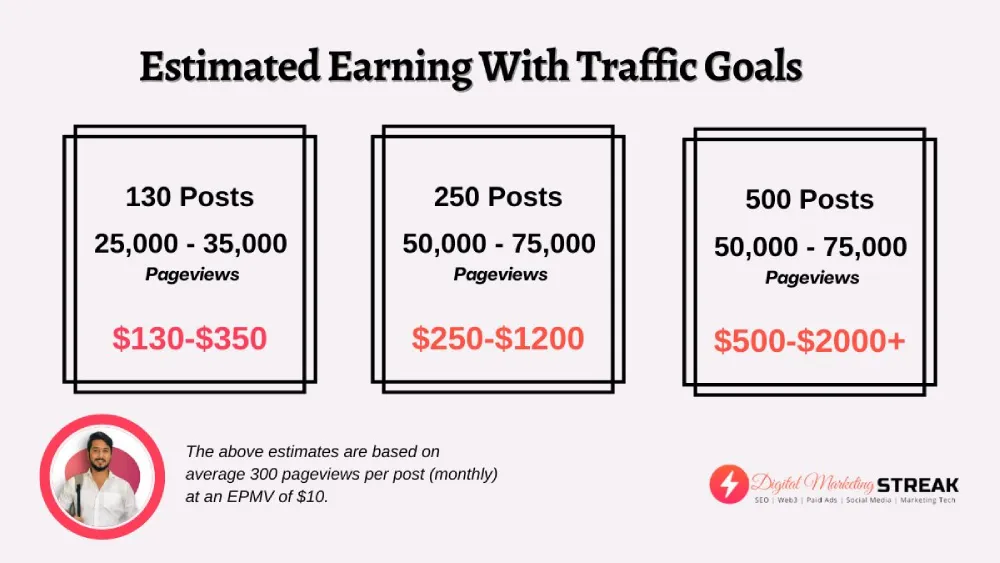
Blog Post Goal
Do not take a break from generating content till your first 60 posts. Keeping up the momentum here is extremely important. And set your blog live after 10 posts. Keep on posting 2-3 blogs weekly on a schedule.
Set a goal to write 250 Blogs posts in 1 year.
If you break it down into 12 months it is around 21 posts per month. It’s very doable. If that is hard for you then the least you should do is:
Set a smaller goal to write 130 blog posts in 1 year.
This means you have to publish at least 10 posts every month. 1-2 posts weekly on a regular basis.
Pageviews Goal (Realistic)
You should target to get 300 page views per month per blog on average. Keep in mind that it takes around 6-8 months for an average blog to reach its traffic potential.
So let’s say you wrote 250 posts in a year, and the following year your blog will generate 75,000 Pageviews per month. You can earn anywhere between $750-$1200 dollars from this blog.
If you had set the smaller goal to publish 130 blogs in your first year, you’ll be able to generate around 39,000 page views per month and can earn an average of $350- $650.
The above estimation is based on my experience will building blogs for display ads and this is achievable. If I can do it, So can you.
Learn SEO:
You can’t run away from learning search engine optimization(SEO). You must first understand what SEO is and then start implementing quality SEO practices in your blog in order to speed up your organic growth.
Bonus: Here is a Free Complete SEO Checklist that covers A-Z important aspects of website SEO that you must cover on your website.
Earn through AdSense account:
What if I say that all that hard work, hours of writing, focusing, and researching will pay you off one day?
Yes, you can be a trending blogger with great website traffic and generate lots of earnings depending on the type of quality content, keywords, and headlines you are using.
Pro Tip: I have already covered 13 Google AdSense requirements in my detailed post. You should definitely read them and I’m sure if you fulfil these 13 tips, You will get 100% AdSense approval.
AdSense helps and allows your website to display Google Ads and each time a visitor clicks on that ad, a particular percentage of the earning is dedicated to you.
Then, as you can see the organic audience is building up, create an Adsense account by filling up the form, adding payment details, and then submitting it.
As the number of visitors to your blog website increases, the chances of them clicking on a particular ad also increase.
Once AdSense is approved, you are eligible for the earnings made through Google ads.
Ways to earn quicker through Adsense:
There are ways to earn more and that totally depends on the way you work.
Few tips that can make visitors stay on your website longer hence generating more chances of traffic and income sideways:
- Publish more and more content. The more blogs that go on your website, the more chances that the keywords get ranked and the reader finds a variety at your website to read.
- Research has proven that images catch the attention of the reader more quickly than text. Publish a blog with images. That is attractive, meaningful, and relevant to the content.
There should be multiple images that go with your blog.
- Would you be interested to read a whole chunk of information that seems so heavy to the eyes? Certainly not.
The same is the case with a blog. A reader never reads a complete blog word for word.
I have written a detailed guide on my secret methods to increase Adsense income per 1000 visitors, Do give it a read if you have a blog already and you want to increase your ads revenue.
Therefore, paragraphing and dividing content and large information into smaller and readable sentences make it lighter to the eyes and a reader can easily skim through what he actually wants to read.
Make a heart connection…
Blogs that rank higher and the content that stays long in the mind and heart of the reader is actually the one that connects with them on a personal level.
To summarize blogging, I would say that write with your soul and heart for the motivation and betterment of the reader.
Give your own personal touch to the blog and see how it works wonders in your favor.
If you want more side hustle ideas to make some extra income, then I recommend reading our post:
Good luck and let’s get started!

